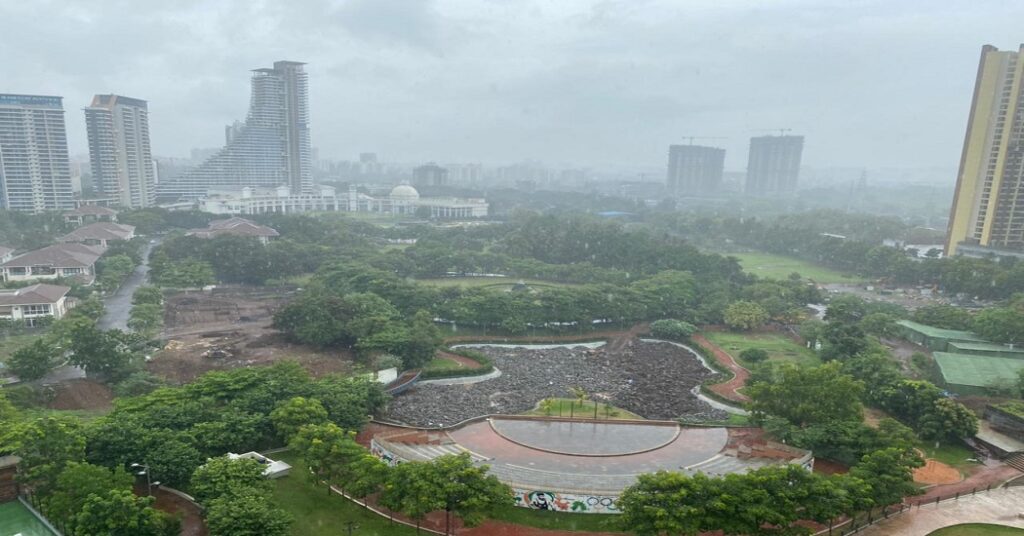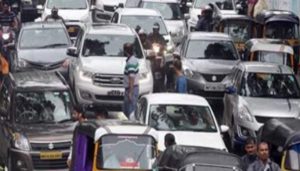Development Of Negative Indian Ocean Dipole Might Affect Monsoon In India

Manasi Saraf Joshi
Pune, 1st July 2021: The latest global model forecasts indicate that the prevailing neutral EI Nino-Southern Oscillation (ENSO) conditions are likely to continue over the equatorial Pacific Ocean and that there is enhanced possibility of development of negative Indian Ocean Dipole (IOD) conditions over Indian Ocean during July to September 2021.
This is likely to cause a reduction in the rainfall of the Southwest Monsoon in India. Although, Indian Meteorological Department (IMD) has predicted a normal Long Period Average (LPA) for July, negative IOD might play the spoil sport.
The Indian Ocean Dipole (IOD), also known as the Indian Niño, is an irregular oscillation of sea surface temperatures in which the western Indian Ocean becomes alternately warmer (positive phase) and then colder (negative phase) than the eastern part of the ocean.
While speaking with the reporters on Thursday, director general, IMD Mrutyunjay Mohapatra said that the monthly rainfall for July will be normal (94% to 106%) of the LPA. However, he said that the rainfall activity will peak over North-western part only in the second week of July.
“The monsoon revival will take place in the second week of July. He said, “the spatial distribution suggests that below normal to normal rainfall probability is likely over many areas of northwest India and some parts of South Peninsula, central, east and northeast India. While it will be normal to above normal rainfall over parts of central India and adjacent areas of peninsular India and Gangetic plains”.
Monsoon in Maharashtra
Mohapatra said, “the state will receive normal to above normal rainfall. But some parts of Central Maharashtra and some parts of Vidharbha might experience a reduced monsoon activity”. Meanwhile, all the four subdivisions of Maharashtra Central, Marathwada, Vidharbha and Konkan and Goa received above normal rainfall in June.
Konkan-Goa (+41%)
Madhya Maharashtra: (+29%)
Marathwada: (+30%)
Vidharbha (+19%)
Heatwave in Kerala
The reduced monsoon activity in Tamil Nadu and Kerala too has increased the worries. There are heat like conditions prevailing in Kerala. While replying to a query, Mohapatra said, “the heat-wave conditions in July over Kerala is very unlikely. But there are evidences of heat-wave conditions prevailed in the state earlier.
New forecast strategy adopted by IMD
This year, IMD has adopted a new strategy for issuing monthly and seasonal operational forecasts for the southwest monsoon rainfall over the country by modifying the existing two stage forecasting strategy. The new strategy is based on the existing statistical forecasting system and the newly developed Multi-Model Ensemble (MME) based forecasting system. The MME approach uses the coupled global climate models (CGCMs) from different global climate prediction and research centers including IMD’s Monsoon Mission Climate Forecasting System (MMCFS) model.
SST conditions in the Pacific and the Indian Oceans
Currently, the sea surface temperatures (SSTs) as well as the atmospheric conditions over equatorial Pacific Ocean indicate neutral ElNino-Southern Oscillation (ENSO) conditions. The latest forecasts from MMCFS and other global models indicate that ENSO neutral conditions are likely to continue during remaining part of the monsoon season.
In addition to ENSO conditions over Pacific, other factors such as the Indian Ocean Sea Surface Temperatures (SSTs) have also some influence on Indian monsoon. Currently, the SST conditions over equatorial Indian Ocean are very close to the threshold level for negative Indian Ocean Dipole (IOD) conditions. The latest forecasts from MMCFS and other global models indicate negative IOD conditions are likely to develop during remaining part of the monsoon season.





